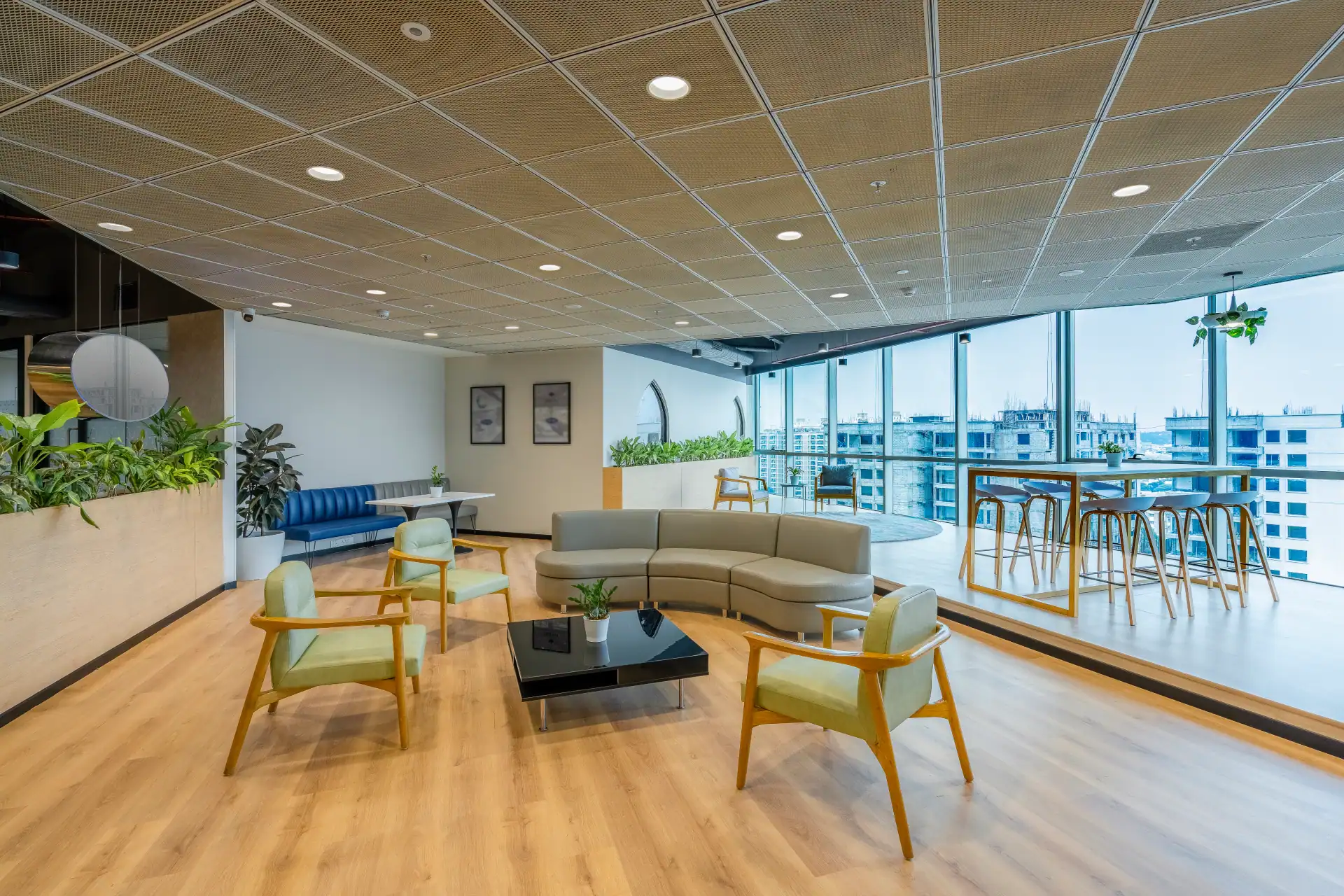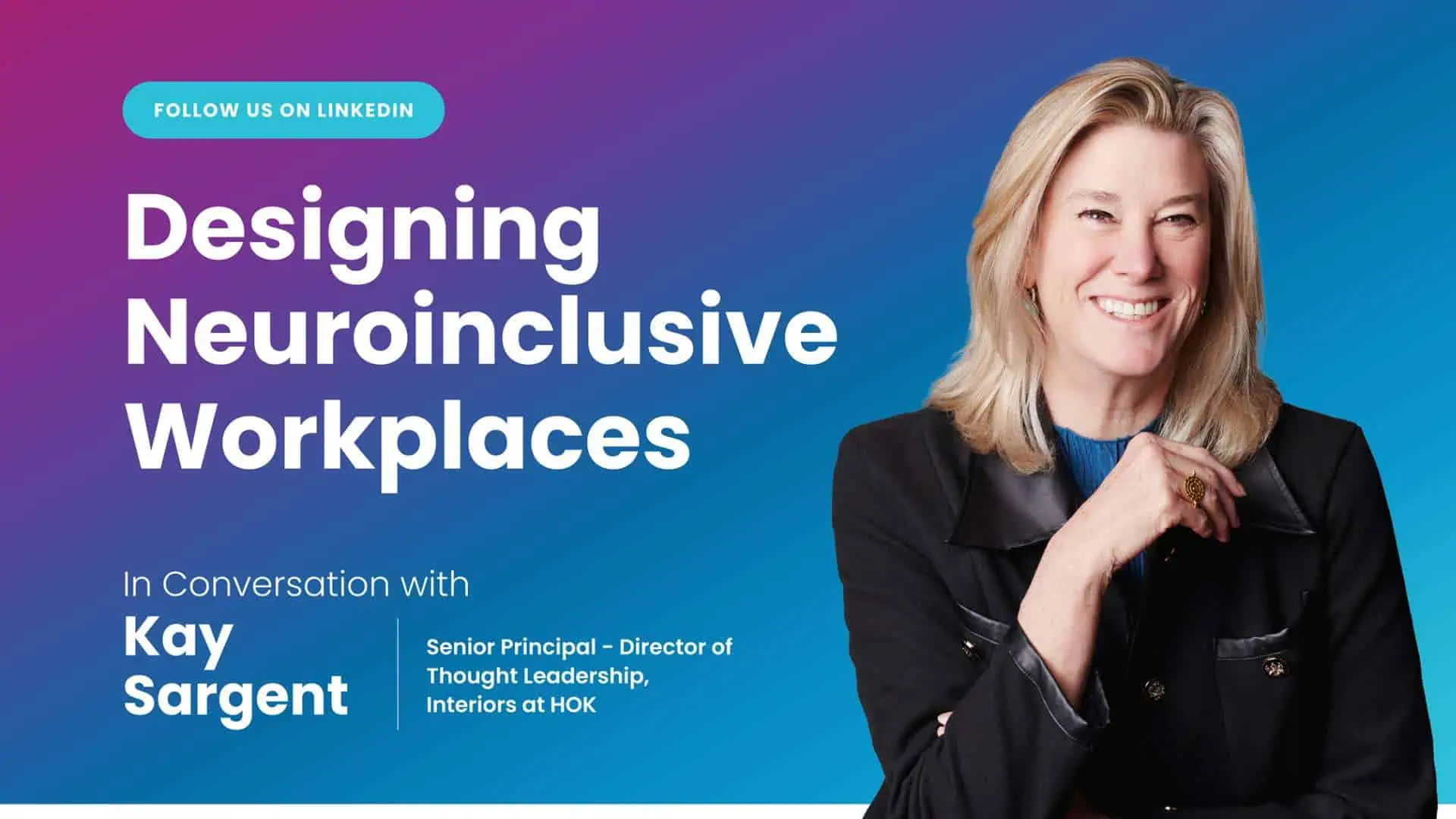India has rapidly evolved beyond its traditional role as an outsourcing hub, emerging as a global epicenter for innovation, research, and development. This transformation is largely driven by the explosive growth of Global Capability Centers (GCCs), which are now strategic nodes for business transformation and new technologies. These centers, once primarily focused on back-office processes, now handle complex functions across the organizational value chain, including product development, innovation, and strategic initiatives.
This strategic shift from cost arbitrage to value creation positions India as a critical partner for global competitiveness. India currently hosts over 1,950 GCCs, employing over 1.9 million professionals and generating more than $64.6 billion in annual revenue. This growth is set to continue, with projections indicating 2,100–2,200 centers, 2.5–2.8 million employees, and $99-105 billion in revenue by 2030. This fundamental change in the strategic mandate of GCCs signifies a qualitative evolution of their functions.
Therefore, the sheer scale and projected expansion of the GCC sector mean that decisions concerning their efficiency, innovation, or talent retention in India will have substantial global ripple effects, elevating workplace design from an operational concern to a strategic imperative for global business leaders.
Building on India’s strategic transformation, lets now have a look at the compelling reasons behind the rapid expansion of GCCs across the nation.
The Ascendance of Global Capability Centers in India: Key Growth Drivers
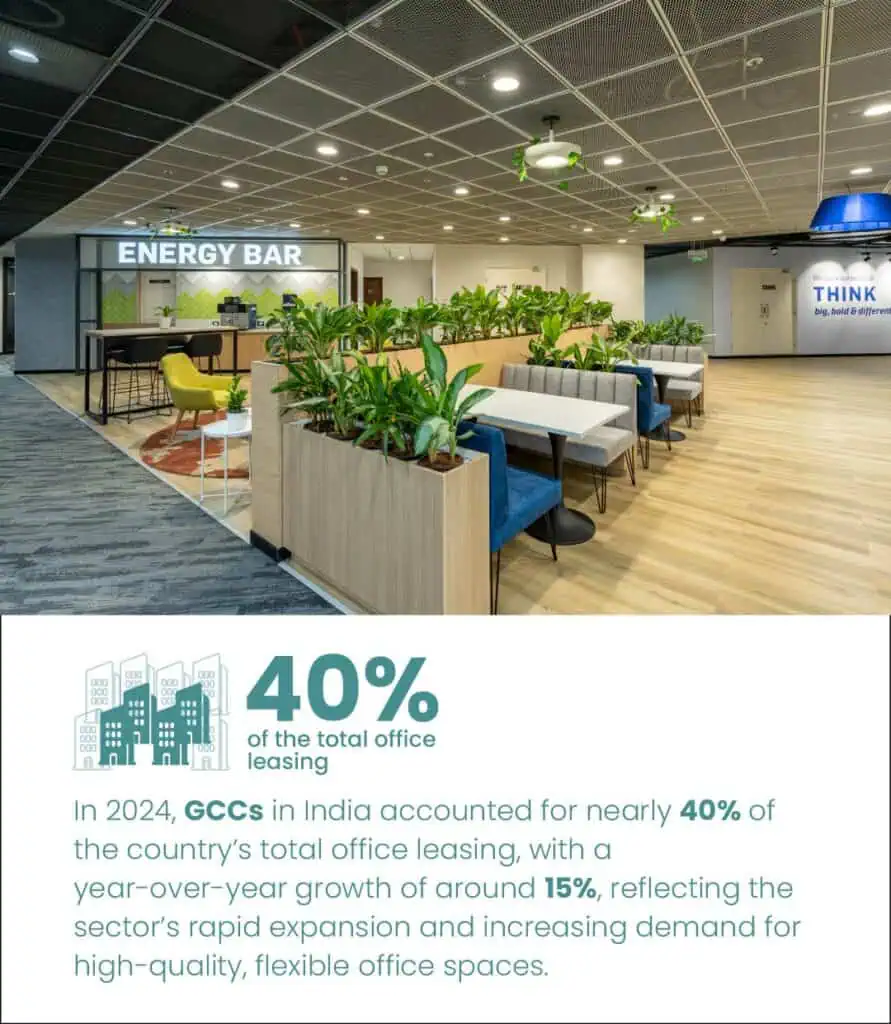
India’s large pool of talented and skilled professionals, cost-effectiveness, and supportive government policies have made it the preferred destination for global companies seeking to drive their next stage of business growth. US-based companies lead this expansion, managing 65% of GCCs in India. Moreover, from a financial perspective, Indian GCCs offer global standards with up to 40% more cost-effectiveness, without compromising quality.
India’s office sector is poised for sustained momentum in 2025, driven by strong economic fundamentals, a firm employment outlook, and favorable government policies. In the first quarter of 2025, South India solidified its position as the premier destination for GCCs, with Bengaluru, Chennai, and Hyderabad collectively accounting for an impressive 64% of all office leasing by GCCs in India. Analysts predict a 10-12% year-on-year increase in GCC footprint across South India. This positive trajectory is expected to continue through Q3 and Q4 2025, with GCCs anticipated to account for a substantial 35-40% of the total office space absorption across top cities in 2025. Looking further ahead, the mid-market segment of GCCs is projected to see significant growth, with revenue increasing by 15-20% between 2024 and 2026. By 2030, the overall GCC sector in India is projected to expand to 2,100–2,200 centers, employing 2.5–2.8 million professionals and generating $99-105 billion in annual revenue.
Strategic Advantage: Workplace Design as a Catalyst for GCC Success
A smart workplace transcends mere aesthetics; it is a modern office environment that seamlessly blends technology, data, and human-centric design. It adapts quickly to people’s needs, using tools like automation, collaboration platforms, and smart sensors to enhance work. Poorly designed offices create friction, hindering concentration and collaboration.
For GCCs, smart workplace design offers significant business benefits:
- Boosting Productivity and Operational Efficiency
- Enhancing Collaboration and Communication
- Improving Employee Well-being and Satisfaction
- Enabling Data-Driven Decision Making and Cost Optimization
- Attracting and Retaining Top Talent
The transition of GCCs to strategic innovation hubs directly elevates the importance of workplace design from a cost center to a strategic investment. If GCCs are now driving R&D and product development, their success hinges on the creativity and productivity of their highly skilled workforce. A smart workplace, thus, supports these outcomes by fostering collaboration, innovation, and employee well-being.
This means the return on investment for workplace design is no longer just about square footage efficiency, but about enhancing core business capabilities and talent output. The strong correlation between workplace design and employee satisfaction and retention highlights a critical strategic challenge for GCCs.
With 51% of GCCs facing talent retention challenges and a competitive market for niche skills, the physical environment becomes a powerful non-monetary incentive. A workplace that feels like a “home away from home” and offers flexibility and privacy can significantly reduce attrition and attract top-tier talent, directly impacting the GCC’s ability to deliver on its innovation mandate.
Given the strategic importance of workplace design, let us now explore the five fundamental pillars for creating environments that drive innovation and foster success within GCCs.
Five Pillars of Impactful Workplace Design for GCCs
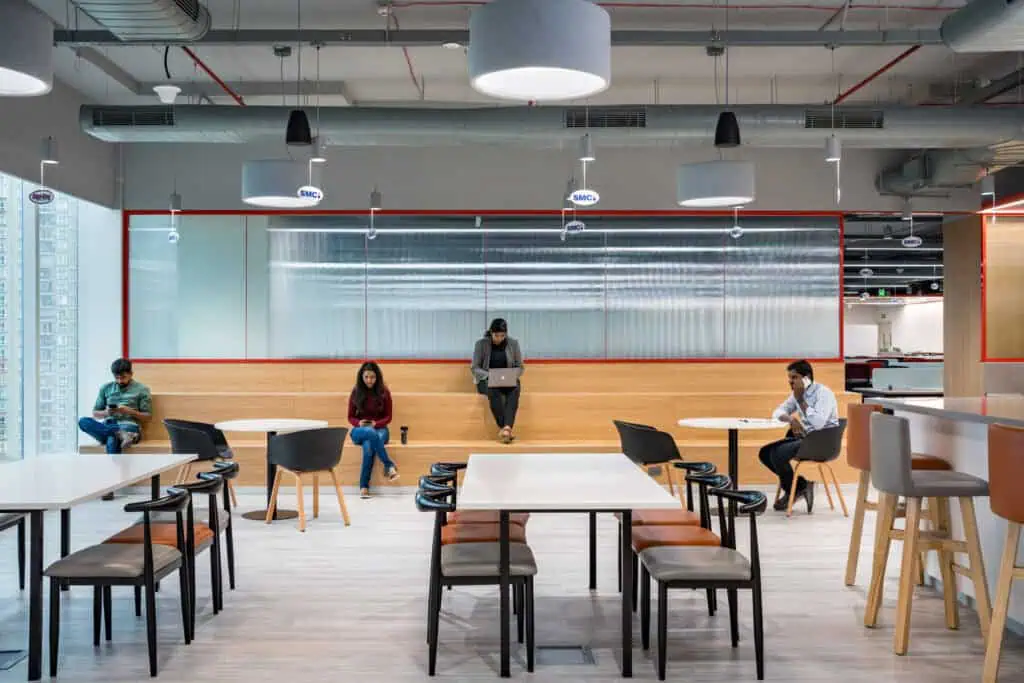
01 Global Project Coordination & Efficiency
Coordinating complex construction and fit-out projects for GCCs across international borders often leads to communication breakdowns, design clashes, cost overruns, and delays due to disparate systems and lack of real-time visibility among overseas stakeholders.
Actionable Insight: Leverage Building Information Modeling (BIM) as a central collaborative platform for all design and build processes. This digital engineering discipline transforms the industry by providing data-driven support throughout the project lifecycle, from planning and design to construction and maintenance. Establish clear BIM execution plans that define roles, responsibilities, and data exchange protocols for all international design, engineering, and construction teams.
02 Intelligent Infrastructure for Seamless & Secure Operations
As GCCs increasingly handle high-value functions like AI/ML and R&D, the paramount concern is ensuring secure and seamless digital operations across hybrid teams. The risk of data breaches and communication silos due to inadequate infrastructure can severely impact innovation, compliance, and overall business continuity.
Actionable Insight: Crucially, embed robust cybersecurity protocols and secure remote access solutions into the core infrastructure. Design dedicated, acoustically treated “Secure Collaboration Pods” or “Confidential Work Zones” within the office, equipped with integrated, encrypted video conferencing systems and hardwired network connections.
03 Brand Immersion & Cultural Cohesion
Maintaining a consistent global brand identity and fostering a unified corporate culture across diverse geographical locations, especially in GCCs, which are internal functions. A disconnect in brand experience can lead to reduced employee loyalty, a fragmented corporate identity, and hinder the GCC’s ability to fully integrate into the global organization’s strategic objectives.
Actionable Insight: Develop a comprehensive “spatial storytelling” strategy where the physical environment visually communicates the company’s core values and mission. Implement a “global brand design playbook” for all GCC offices, ensuring core elements like color palettes, material choices, and technology integration are consistent with the parent company. Simultaneously, allocate specific areas for local cultural expression to foster a sense of belonging and reinforce a globally connected, locally relevant identity.
04 Adaptive & Optimized Space Ecosystems for Hybrid Work
The challenge for GCCs in a hybrid work era is the underutilization of expensive real estate and the struggle to create an office environment that genuinely attracts employees back, given diverse individual work styles and the comfort of working from home.
Actionable Insight: Deploy real-time occupancy analytics tools to identify underutilized areas and peak usage times. Use this data to strategically reconfigure collaborative zones and quiet focus pods, potentially reducing overall real estate costs by optimizing space allocation for a hybrid workforce.
05 Strategic Workplace Planning & Evolution
Many organizations struggle to align their physical workspace with evolving business objectives and employee needs, especially with the shift to hybrid work.
Actionable Insight: Develop a dynamic workplace strategy that prioritizes “effectiveness” over mere “efficiency.” This involves continuous assessment of employee needs, work patterns, and business goals. Conduct quarterly workplace effectiveness surveys and utilize occupancy data to refine hybrid work policies and office layouts.
All in All: Unlocking GCC Potential Through Design
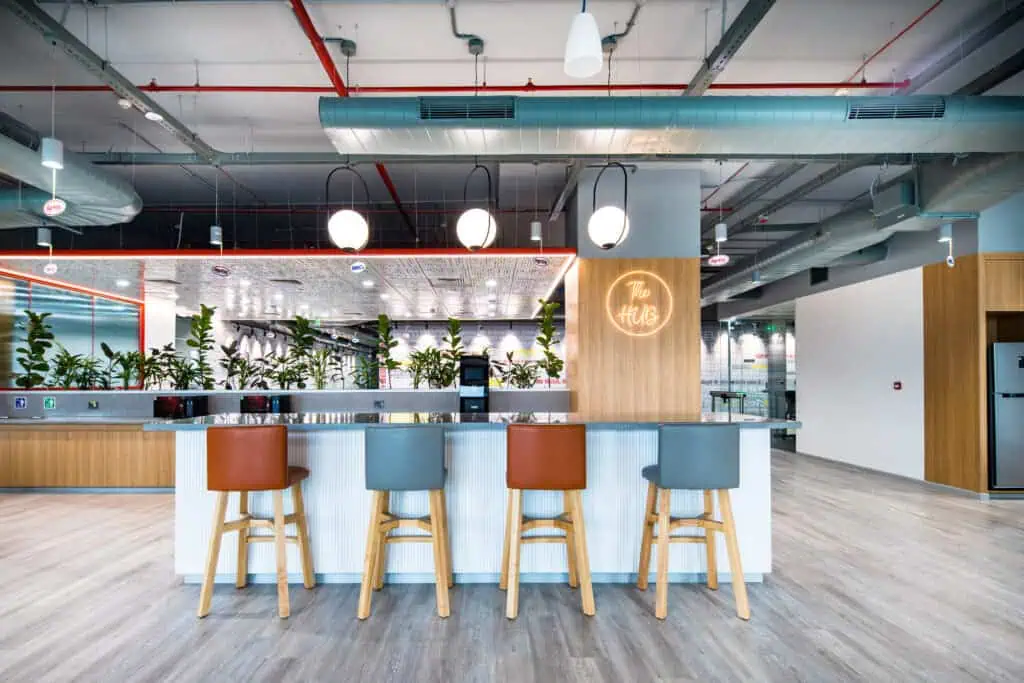
Smart workplace design is a strategic imperative for Global Capability Centers in India. It is a powerful driver of innovation, productivity, and talent retention, directly influencing a GCC’s ability to deliver high-value outcomes for its parent organization.
As GCCs continue their evolution into strategic innovation hubs, investing in intelligent, human-centric, and culturally attuned workspaces will be key to unlocking their full potential and securing future success.
Transform your GCC into a hub of innovation and excellence! Connect with the experts at Zyeta to design and build smart, future-ready workplaces that empower your teams and elevate your brand in India.
Related Reads:
How Can Multi-Sensorial Workplace Design Foster Organizational Success?

